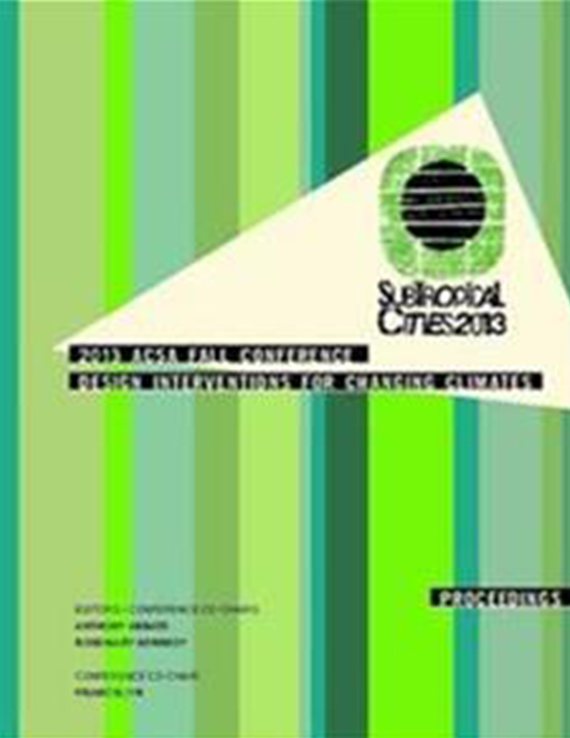Author(s): Nick Gelpi
This paper presents a case study pavilion, both as a design process and as a constructed form, which embodies new design methodologies indicating a shift in design tendencies from something ideal towards something more contingent. The author argues that this emerging tendency is a combination of advanced fabrication technologies as well as an evolving attitude towards our use of materials and how they relate to the environment in the design process, from something ideal and historically based to something contingent and environmentally based. The text compares 2 contrasting models of practice from recent history which demonstrate differing attitudes toward the utility of design contingency, highlighting projects which institute old techniques of impermeability aka “The Bulletproofing” of buildings, in comparison to the flexible, resilient, and more modest structures and techniques based on verification in the field. The paper discusses the project in the context of two different graduate level university seminars, uniting them through material investigations, one related to fabrication and the other related to understanding materials as “soft” matter. The stitching together of these courses through this project, suggests pedagogically how Digital Fabrication functions as a model for research by combining new tools and techniques with a more nuanced approach towards understanding and implementing materials and their behaviors. Digital fabrication allows for design customization in the tradition of DIY, and provides a more flexible means and methods for working with non-standard construction and assemblies based on a more extensive understanding of the way materials behave, whereas off the shelf components and systems approach materials from a perspective of standards and averages, not allowing for subtle nuances or adaptations to environment.The paper highlights several shifts away from an ideal project, as the combination of these various shifts contribute to a discourse based more broadly on contingency. The author delineates 5 objectives of the project including the following shifts in methodology: From Mass to Personal, from Hard to Soft, from Static to Reactive, from Material Neutrality to Material Specificity, and from Flat to Unflat. The paper documents the process of selecting a specific species of wood from a variety of trees for a combination of factors including being soft enough to be bent, yet rigid enough to act structurally. Collectively these various innovations constitute a shift towards a new design practice which allows for feedback of environment and material. As contemporary practice evolves technologically and climates continue to change, the very nature by which we test and materialize our designs also shift. This project demonstrates how being acutely aware of the behavior of different material species and their properties, is not only more appropriate in this climate, however more advantageous economically and suggestive of new forms. The paper makes the case that this new example of practice does the work of fine tuning form for environment and material, and this work is the focus for understanding this new tendency of contemporary design as a new possibility for responding to a climate which isn’t ideal rather contingent and always changing.
Volume Editors
Anthony Abbate, Francis Lyn & Rosemary Kennedy
ISBN
978-0-935502-90-9

 Study Architecture
Study Architecture  ProPEL
ProPEL 
